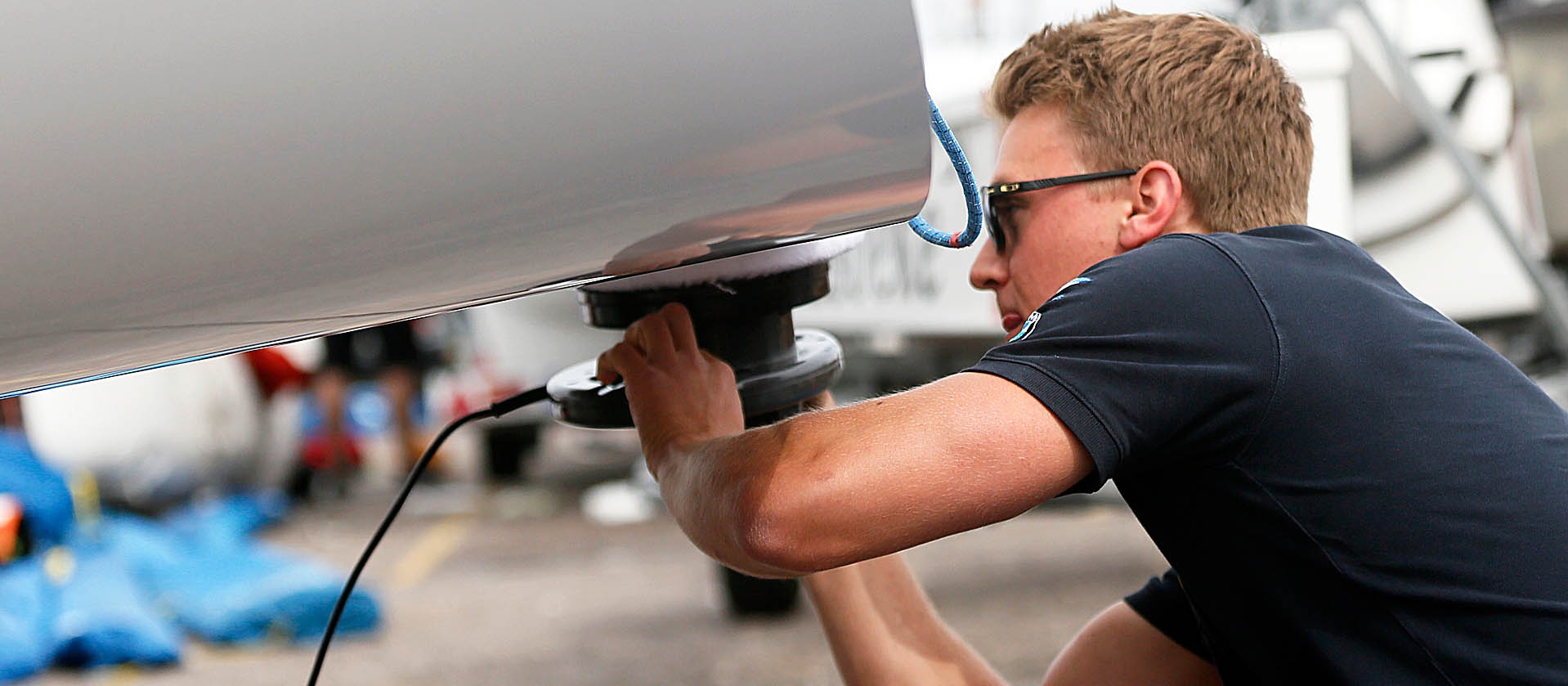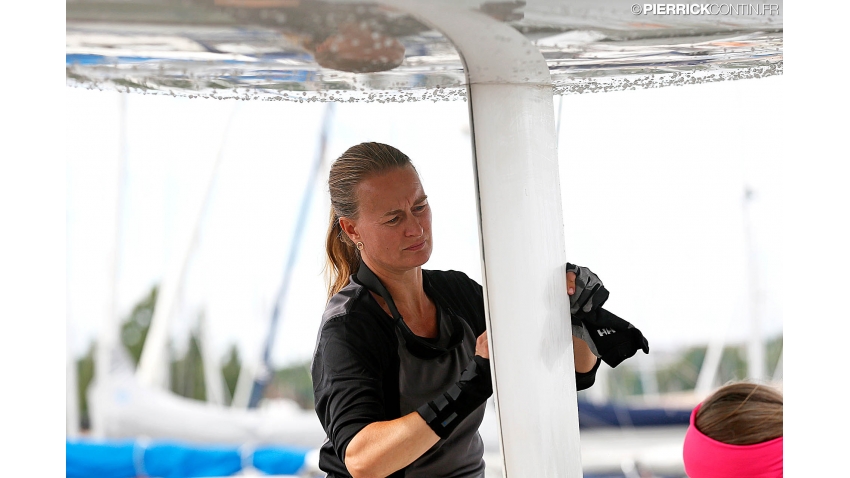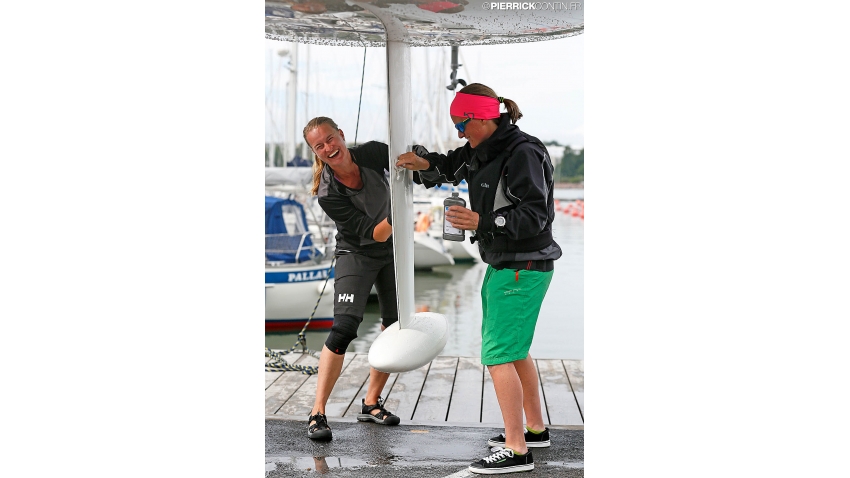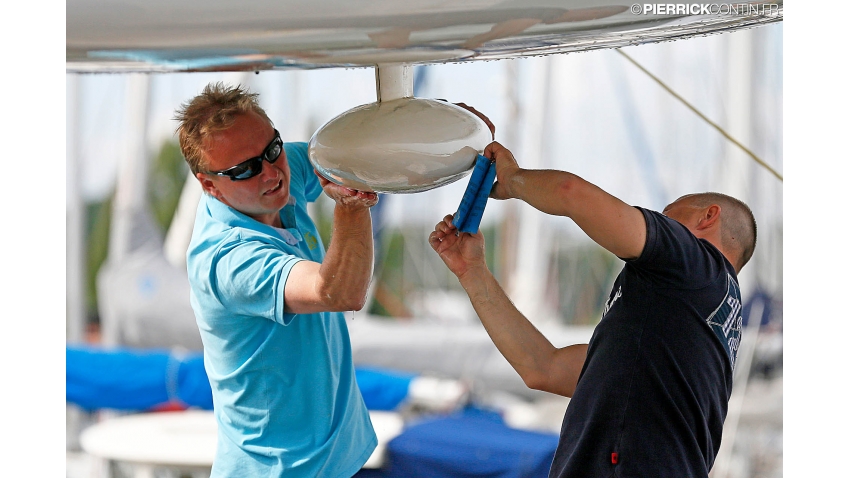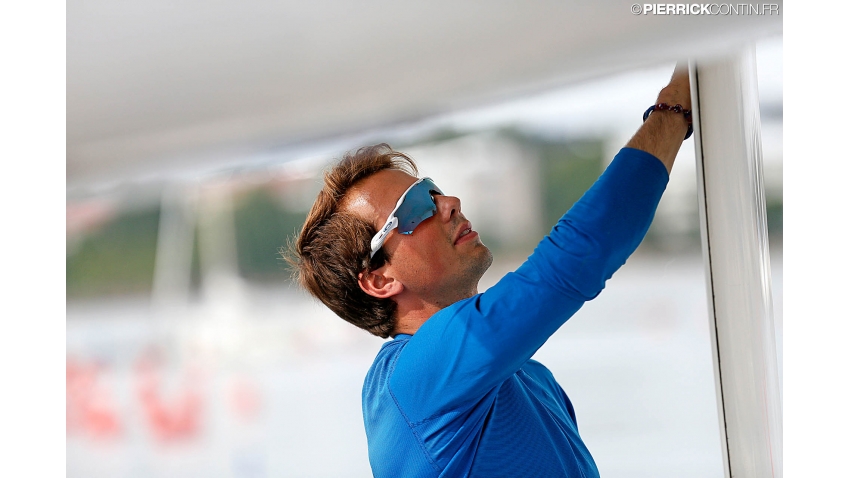Maintenance
Euan Seel, boatbuilder, surveyor & Melges 24 production and quality control consultant, gives a few helpful suggestions to keep your Melges 24 hull in top condition. The Melges hull and deck glasswork is made with high quality materials and with care should last for years. Here are a few tips to help keep your boat in good shape & hopefully maintain its resale value.
Hull Cleaning
Always make sure you wash the hull and deck and clean the muck line off around the waterline. This is either oil/diesel or discoloration from the water and gets harder to remove with time. The staining can be removed with a good quality boat wax or non-abrasive hull cleaner. NEVER use an abrasive cleaner, unless that is that you like a matte finish to your hull & deck. It is always advisable to keep you hull and the smooth surfaces of the deck well waxed. This helps to protect the gel coat from ultra violet rays and staining, which can in time degrade the gel coat, making it powdery, so if you don't have a hull cover keep you boat waxed.
Trailer Bunks
Another area that can cause problems is the covering on your trailer bunks. Make sure they are well covered with a good quality carpet, not a hard nylon carpet as this can damage the gel coat surface. Whenever possible wash and dry the carpet to remove salt, sand and any foreign objects which could scratch the gel. Leaving the hull sitting on wet bunks can cause blistering in the gel, so it is important to dry the carpet. A non-absorbent plastic or rubber foam makes a very good bunk covering that will not absorb water, will cushion the hull and if laid in strips will allow air to get between the hull and the bunks & dry it out. It is also easier to put on than carpet. One thing to watch for when using any solvent based adhesive is to make sure that the gel coat does not come into contact with the solvent laden carpet too soon. Give the carpet time to breathe before you load the trailer or cover the bunks with polythene to protect the hull.
Gel Coat Damage
Any damage to the gel surface, any scratches, crazes or chips should be covered if there is a chance that moisture can get to the glass lay-up. The easiest way to keep water out is to put plastic tape over any damage or put some plastic filler in the damaged area. It won't stop the moisture but it will slow it down.
Ventilation
As with any boat try to ventilate the hull as much as possible. Drying out the inside will keep the boat down to weight, make it smell a whole lot less and help reduce the risk of the inside laminate absorbing water. One point to keep in mind is that fresh water is more likely to cause osmosis than salt water due to smaller molecules, so wash the boat out but make sure you dry it out afterwards.
Rudder
If you use a rudder bag make sure you wash and dry the blade before you put it into the bag and make sure that the bag is dry inside. The rudders are carbon fibre and epoxy painted but contact with moisture can cause blistering and it will help reduce staining from the stainless fittings. Check the bolts fastening the rudder straps and tighten if necessary, they do work loose. It’s worth using Loctite on them. Undo the bolts one at a time so you do not let the fittings move.
Kelp Cutter
Whilst you are cleaning and washing the hull, give the keel bulb & fin a good soaking and try to wash any sand or dirt away from around the top nylon. Wash out the kelp cutter tube and housing in the lead bulb when the boat is on dry land. There is a nasty mixture of carbon, stainless steel and salt water in the blade housing and a few crews have pulled up their kelp cutter and the blade has corroded and broken off the shaft.

